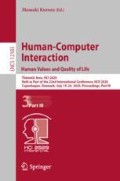Abstract
After the fall of the Communist regime, the city of Tirana has been facing a series of social/spatial issues related to a top-down decisional system that could not take into account the new needs of a society shifting from a centralized system to a new one based on private property. The result of this phenomenon is the growth of a series of urban areas, where the poorest citizens have used informal settlements has a way to reclaim their portion of private land. In this paper, starting from original research (Dhamo [20]), we present Tirana as a paradigmatic case of ‘organic city’ (derived from the former Ottoman architecture) and we analyze a peculiar model of urban settlements that are able to grow following complex and fractal structures. The study here presented, structured as an academic class at POLIS University, will be developed through computational design and interactive engaging technologies, with the main aim of creating an interdisciplinary study framework to tackle complexity and evolutionary issues in contemporary urban fabrics. The process will be explained through three didactic cycles where interactive technologies, such as artificial intelligence and engaging human-based tools, can play to set the debate for a deeper understanding of the informal areas reality and foster co-design processes from the perspective that a collective interest is a key to let professionals, institutions, and citizens, work together in a more informed process of city-making.
Access this chapter
Tax calculation will be finalised at checkout
Purchases are for personal use only
Notes
- 1.
The ASA&IT studio has been founded by the former dean of POLIS University Antonino di Raimo. Through the years, the class have been speculating on several topics dealing with contemporary crisis (such as ecology issues; the IT revolution in Architecture; future interplanetary scenarios) in order to offer a new perspective for the architectura discipline. Currently, the studio is conducted by Professors Ledian Bregasi, Sotir Dhamo, Valerio Perna, and PhD Candidate Gerdi Papa.
- 2.
- 3.
Research Through Design (RtD) aims for generating new knowledge by understanding the current state and then suggesting new possibilities future state in the form of a design. It usually The process involves the developing of a series of cycles of research insights to broaden the research possibilities of a topic [12, 13].
References
Ingersoll, R., Kostof, S.: World Architecture: A Cross-Cultural History. Oxford University Press, Oxford (2012)
Portugali, J.: Self-Organization and the City. Springer, Berlin (2000). https://doi.org/10.1007/978-0-387-30440-3_471
Declerck, J., Zenghelis, E., Aureli, P.V.: Tirana Metropolis. Berlage Institute, Rotterdam (2004)
Saggio, A.: Introduzione alla rivoluzione informatica in architettura. Carocci, Roma (2007)
MVRDV/DSD: Space Fighter: The Evolutionary City (game). Actar, Barcelona (2007)
Bertanlaffy, L.: General System Theory. Foundation, Development, Application. George Braziller, New York (1968)
Bocchi, G., Ceruti, M.: La sfida della complessità. Mondadori, Milano (1985)
Bregasi, L.: Proprietà Emergenti come Strumento per la Gestione della Complessità in Architettura Simulatori e Generatori per la Guida di Progetti Autoregolati, Ph.D. thesis, Sapienza - Università di Roma, Roma (2016)
Zheng, H., Huang, W.: Architectural Drawings Recognition and Generation through Machine Learning. ACADIA, Cambridge (2018)
Capra, F.: The Web of Life. Anchor Books, New York (1996)
Toffler, A.: The Third Wave. Bantam Books, New York (1980)
Zimmerman, J., Forlizzi, J., Evenson, S.: Research through design as a method for interaction design research in HCI. In: Proceedings of the 2007 Conference on Human Factors in Computing Systems, CHI 2007, San Jose, California, USA (2007). https://doi.org/10.1145/1240624.1240704
Forlizzi, J., Zimmerman, J., Stolterman, E.: From design research to theory: evidence of a maturing field. In: Conference: International Association of Societies of Design Research Conference (2009)
Hildebrandt, H., Carere, C., Hemelrijk, C.K.: Self-organized aerial displays of thousands of starlings: a model. Behav. Ecol. 21(6), 1349–1359 (2010). https://doi.org/10.1093/beheco/arq149
Otto, F.: Occupying and Connecting: Thoughts on Territories and Spheres of Influence With Particular Reference to Human Settlement. Axel Menges, Felibach (DE) (2008)
Bateson, G.: Steps to an Ecology of Mind. University of Chicago Press, Chicago (1972)
Fromm, J.: The Emergence of Complexity. Kassel University Press, Kassel (2004)
Van Dyke Parunak, H.: Making swarming happen. In: Proceedings of Conference on Swarming and Network Enabled Command, Control, Communications, Computers, Intelligence, Surveillance and Reconnaissance (C4ISR), McLean, Virginia, USA (2003)
Marsh, L., Onof, C.: Stigmergic epistemology, stigmergic cognition. Cogn. Syst. Res. 9(1), 136–149 (2008). https://doi.org/10.1016/j.cogsys.2007.06.009
Dhamo, S.: Specific realities and new hypotheses for urban analyses and urban design - Tirana as a case study, developed in the framework of the PhD program in architecture and urban planning between POLIS and Ferrara Universities (2018)
Author information
Authors and Affiliations
Corresponding author
Editor information
Editors and Affiliations
Rights and permissions
Copyright information
© 2020 Springer Nature Switzerland AG
About this paper
Cite this paper
Dhamo, S., Bregasi, L., Perna, V. (2020). Computational Design for Complexity-Related Issues. Strategies to Foresee Emergent Behavior and Social Conflict in the ‘Organic’ Tirana. In: Kurosu, M. (eds) Human-Computer Interaction. Human Values and Quality of Life. HCII 2020. Lecture Notes in Computer Science(), vol 12183. Springer, Cham. https://doi.org/10.1007/978-3-030-49065-2_40
Download citation
DOI: https://doi.org/10.1007/978-3-030-49065-2_40
Published:
Publisher Name: Springer, Cham
Print ISBN: 978-3-030-49064-5
Online ISBN: 978-3-030-49065-2
eBook Packages: Computer ScienceComputer Science (R0)

